Abstract
This study was designed to investigate whether exposure to nitrate-containing dust during fertiliser manufacture was associated with an excess of deaths from cancer in general or specifically from cancers of the digestive tract, liver, lung, and bladder. It was based on data extracted from census schedules by the Office of Population Censuses and Surveys, occupational characteristics recorded by fertiliser workers at the 1961 and 1971 censuses of England and Wales being related to subsequent mortality ascertained through the National Health Service Central Register. The 1961 cohort, followed up until 1978, showed a "healthy worker effect" and no evidence of excess mortality from cancer at any site. The 1971 cohort also showed below average mortality during 1971-7 for all causes of death and for circulatory diseases, but there were more deaths from cancer than expected, due mainly to an excess of cancers of the lung and digestive tract. The excess of cancer was more pronounced, but not statistically significant, when compared with other employed men. Though the numbers for comparison were small, there was weak evidence of an association between cancer mortality and frequency of exposure to nitrate-containing dust in this cohort. It is difficult to reconcile the excess cancer mortality in the 1971 cohort with the more favorable level in the earlier cohort, since industrial hygiene has improved and the cohorts showed a similar distribution by region and social class. To examine further these conflicting results the 1971 cohort will be followed for a longer period and re-examined when more deaths have accrued.
Full text
PDF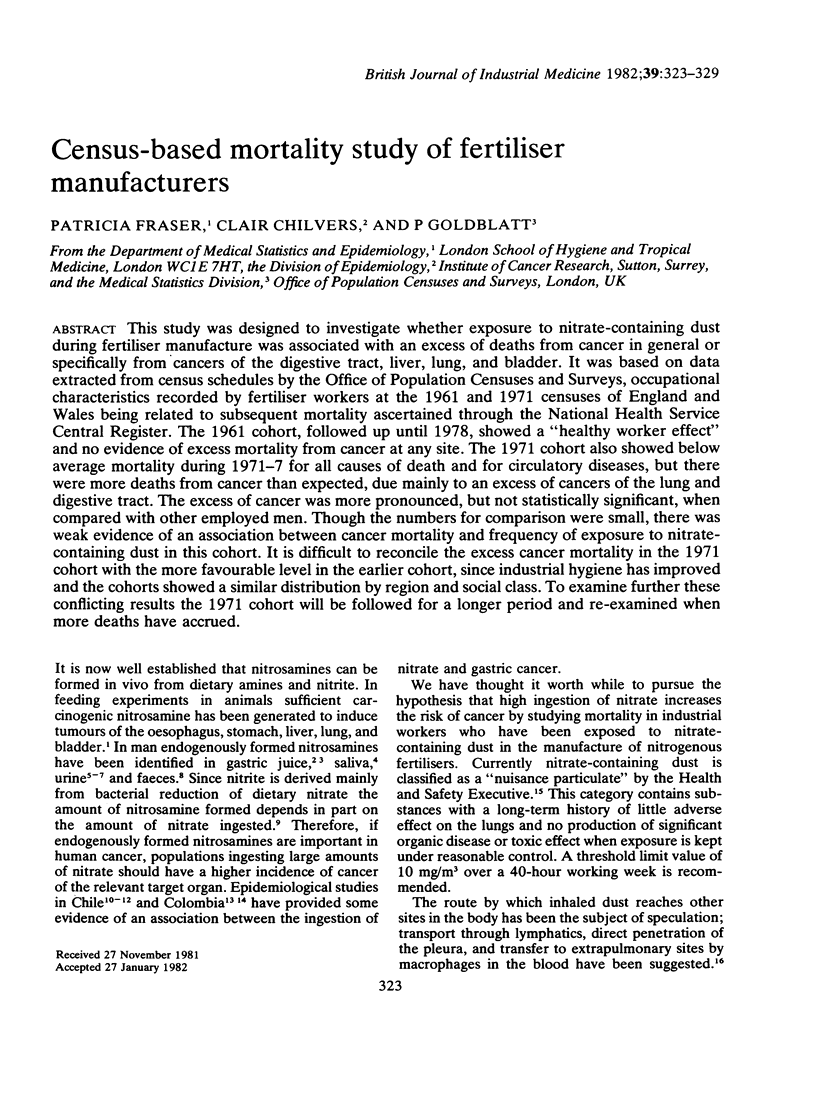
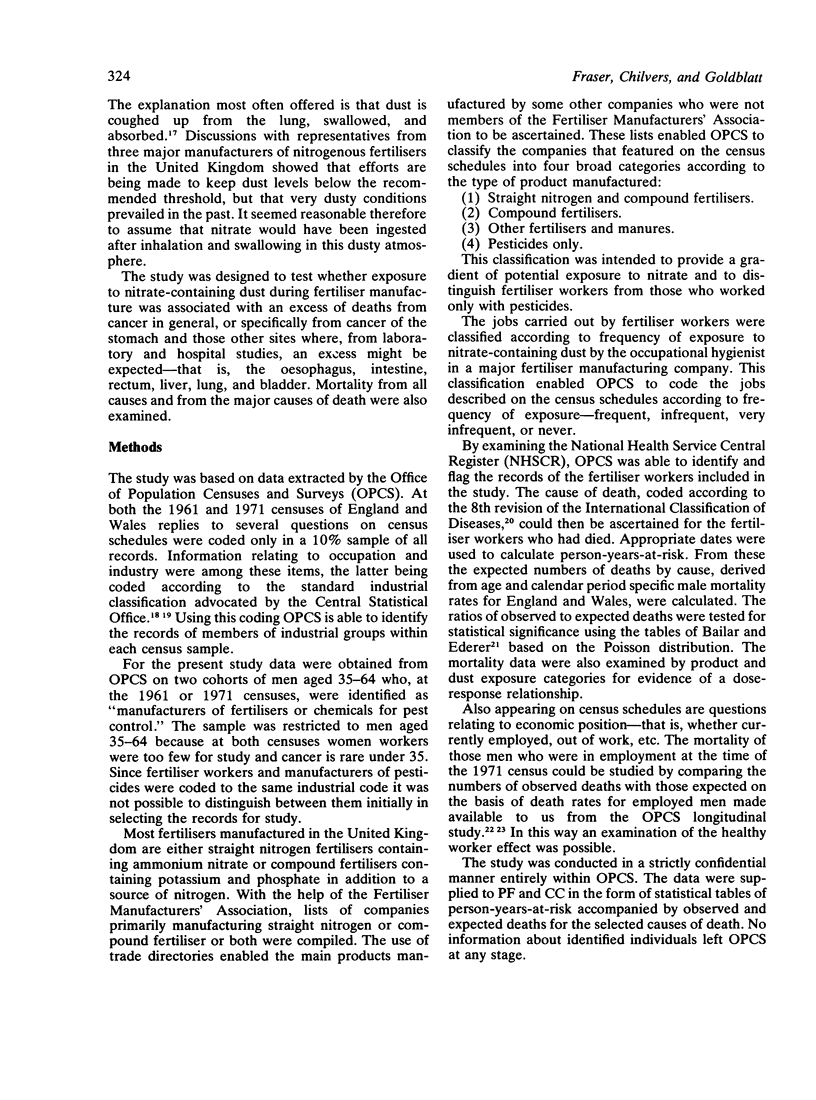
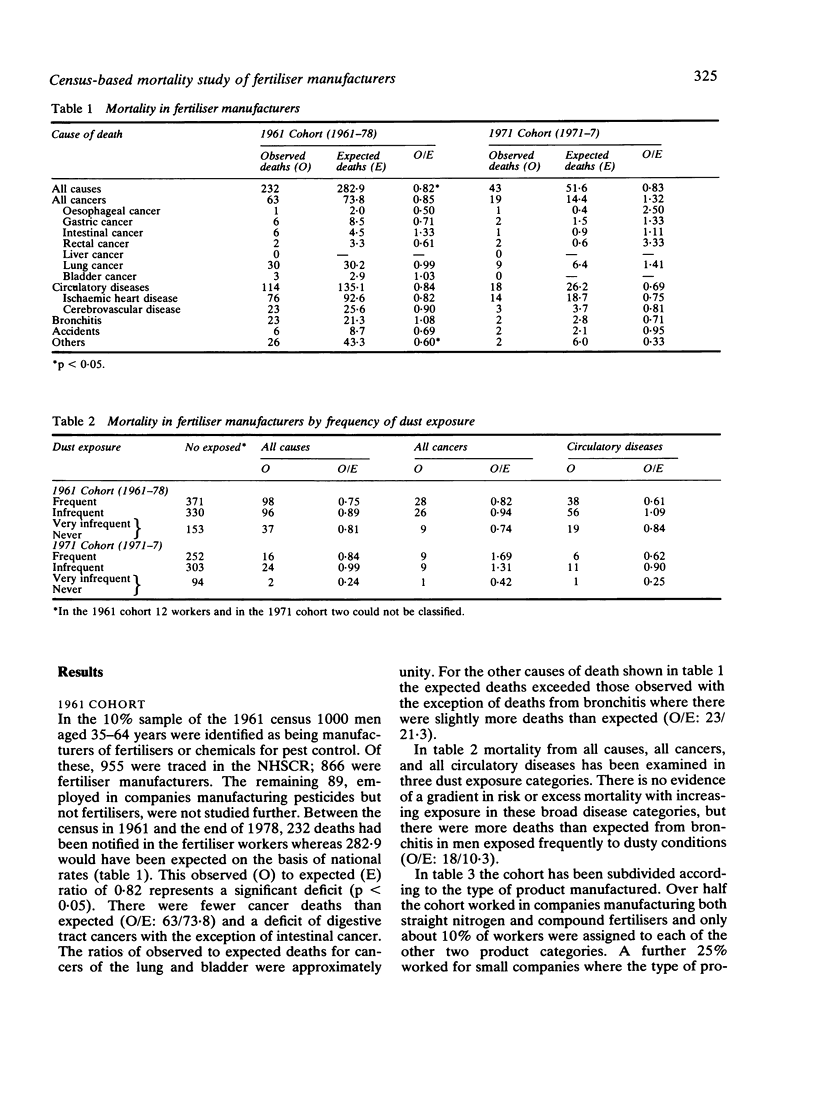
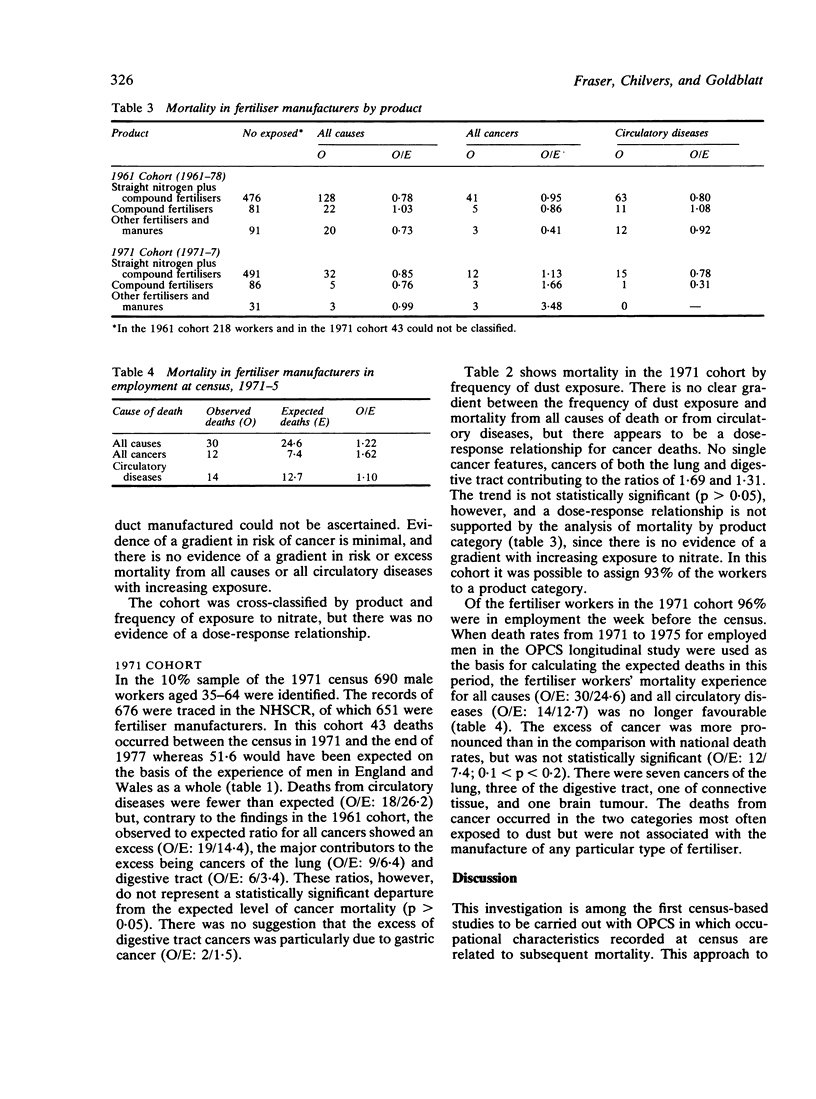
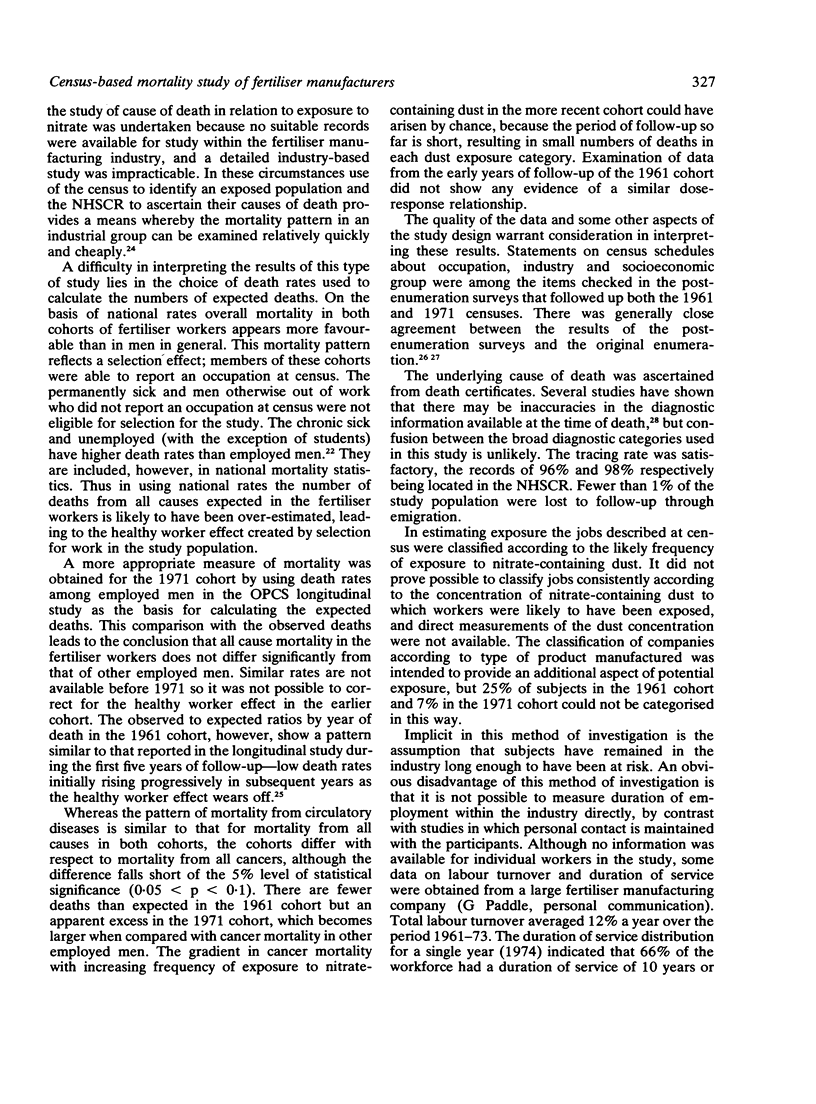
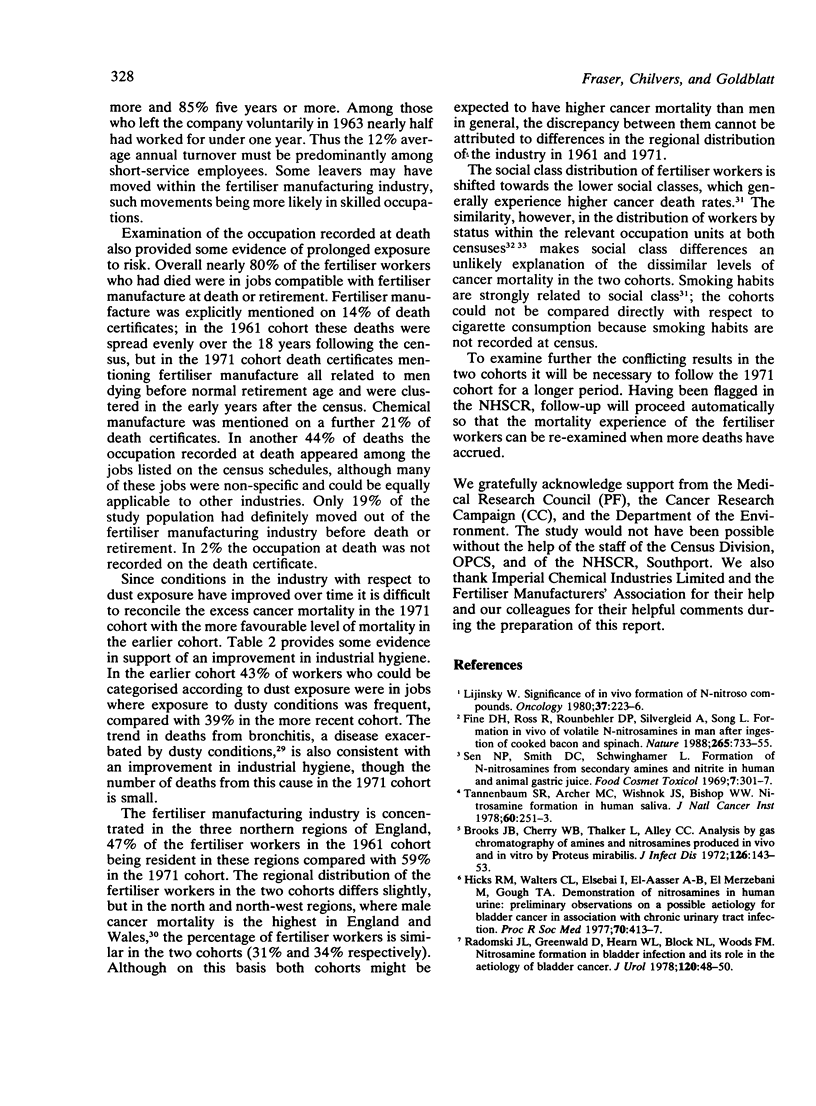

Selected References
These references are in PubMed. This may not be the complete list of references from this article.
- Alderson M. Cancer mortality in male hairdressers. J Epidemiol Community Health. 1980 Sep;34(3):182–185. doi: 10.1136/jech.34.3.182. [DOI] [PMC free article] [PubMed] [Google Scholar]
- Armijo R., Gonzalez A., Orellana M., Coulson A. H., Sayre J. W., Detels R. Epidemiology of gastric cancer in Chile: II - Nitrate exposures and stomach cancer frequency. Int J Epidemiol. 1981 Mar;10(1):57–62. doi: 10.1093/ije/10.1.57. [DOI] [PubMed] [Google Scholar]
- Brooks J. B., Cherry W. B., Thacker L., Alley C. C. Analysis by gas chromatography of amines and nitrosamines produced in vivo and in vitro by Proteus mirabilis. J Infect Dis. 1972 Aug;126(2):143–153. doi: 10.1093/infdis/126.2.143. [DOI] [PubMed] [Google Scholar]
- Cuello C., Correa P., Haenszel W., Gordillo G., Brown C., Archer M., Tannenbaum S. Gastric cancer in Colombia. I. Cancer risk and suspect environmental agents. J Natl Cancer Inst. 1976 Nov;57(5):1015–1020. doi: 10.1093/jnci/57.5.1015. [DOI] [PubMed] [Google Scholar]
- Fox A. J. The role of OPCS in occupational epidemiology: some examples. Office of Population Censuses and Surveys. Ann Occup Hyg. 1978;21(4):393–403. doi: 10.1093/annhyg/21.4.393. [DOI] [PubMed] [Google Scholar]
- Hicks R. M., Walters C. L., Elsebai I., Aasser A. B., Merzabani M. E., Gough T. A. Demonstration of nitrosamines in human urine: preliminary observations on a possible etiology for bladder cancer in association with chronic urinary tract infections. Proc R Soc Med. 1977 Jun;70(6):413–417. doi: 10.1177/003591577707000613. [DOI] [PMC free article] [PubMed] [Google Scholar]
- Holt P. F. Transport of inhaled dust to extrapulmonary sites. J Pathol. 1981 Feb;133(2):123–129. doi: 10.1002/path.1711330204. [DOI] [PubMed] [Google Scholar]
- Lijinsky W. Significance of in vivo formation of N-nitroso compounds. Oncology. 1980;37(4):223–226. doi: 10.1159/000225440. [DOI] [PubMed] [Google Scholar]
- Miller A. B. Asbestos fibre dust and gastro-intestinal malignancies. Review of literature with regard to a cause/effect relationship. J Chronic Dis. 1978 Jan;31(1):23–33. doi: 10.1016/0021-9681(78)90078-4. [DOI] [PubMed] [Google Scholar]
- Mirvish S. S. Formation of N-nitroso compounds: chemistry, kinetics, and in vivo occurrence. Toxicol Appl Pharmacol. 1975 Mar;31(3):325–351. doi: 10.1016/0041-008x(75)90255-0. [DOI] [PubMed] [Google Scholar]
- Radomski J. L., Greenwald D., Hearn W. L., Block N. L., Woods F. M. Nitrosamine formation in bladder infections and its role in the etiology of bladder cancer. J Urol. 1978 Jul;120(1):48–50. doi: 10.1016/s0022-5347(17)57035-4. [DOI] [PubMed] [Google Scholar]
- Sen N. P., Smith D. C., Schwinghamer L. Formation of N-nitrosamines from secondary amines and nitrite in human and animal gastric juice. Food Cosmet Toxicol. 1969 Jul;7(4):301–307. doi: 10.1016/s0015-6264(69)80366-4. [DOI] [PubMed] [Google Scholar]
- Tannenbaum S. R., Moran D., Rand W., Cuello C., Correa P. Gastric cancer in Colombia. IV. Nitrite and other ions in gastric contents of residents from a high-risk region. J Natl Cancer Inst. 1979 Jan;62(1):9–12. [PubMed] [Google Scholar]
- Wang T., Kakizoe T., Dion P., Furrer R., Varghese A. J., Bruce W. R. Volatile nitrosamines in normal human faeces. Nature. 1978 Nov 16;276(5685):280–281. doi: 10.1038/276280a0. [DOI] [PubMed] [Google Scholar]


